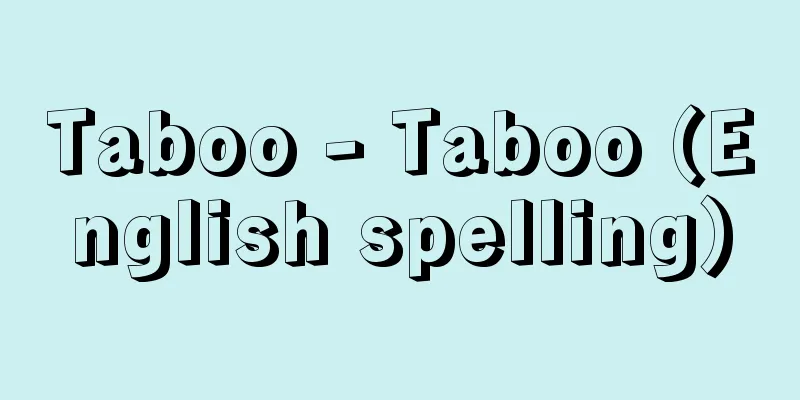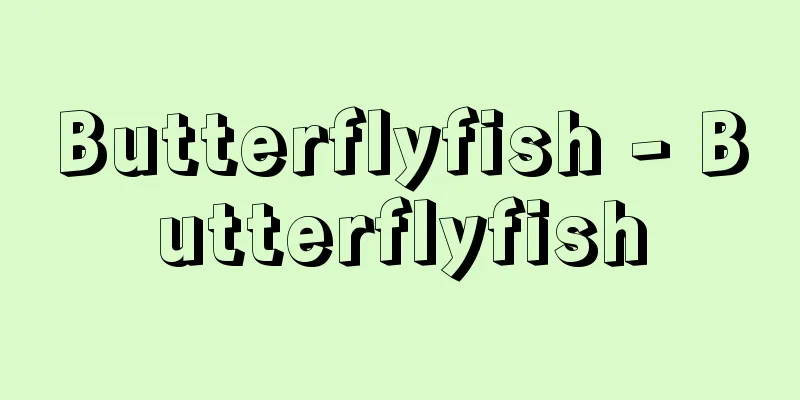Taboo - Taboo (English spelling)

|
Taboo is originally a Polynesian word, a combination of ta (to mark) and pu (an adverb showing intensity), meaning "clearly marked" or "nailed". From this, the meanings "sacred" and "prohibited" are derived, but taboo is a single concept, not a compound concept that includes the separate meanings of sacredness and prohibition. This is because in Polynesia, sacred objects and places were generally marked in a special way so that anyone could know that they were sacred, and not approaching or touching them was a situational choice. For example, in Polynesia, an individual's political authority was measured by the type of taboo he could impose, and these taboos could only be overridden by those in higher offices than him. If a food regulator proclaimed a taboo on a food, it could not be eaten until the next harvest. This was because the Polynesian political hierarchy was a hierarchy of vetoes, and the vetoes were enforced in the form of taboos. Thus, taboo is a unique concept that should be interpreted within the context of Polynesian culture, but when it was transplanted into Western culture it was subject to various distortions. [Tosa Masaki] Various interpretations of tabooThe word taboo was first described by a Westerner, J. Cook, at the end of the 18th century, and was imported mainly into Victorian British society. Since there was no word in English with a broader meaning than taboo, attempts were made to understand the meaning of taboo by breaking it down into two concepts: "prohibition" and "sacredness." Furthermore, the concept of taboo was separated from its Polynesian cultural context and interpreted based on Western cultural standards, and was introduced into religious studies and anthropology with various semantic biases. For example, R. Smith dismissed taboos as the lowest form of superstition. He argued that in savages, the causes of impurity and taboo are perceived as the same thing, and he considered such ideas to be remnants of primitiveness that existed before the establishment of monotheism. This misunderstanding is due to his separation of the concept of "sacred" from taboo and his careless association with the concept of "uncleanness." At the same time, the Victorian era was a time when a rationalistic approach to religion began to flourish, and the society itself was full of taboos. Furthermore, while Fraser, Bundt, Freud, and others grouped together a variety of phenomena under the name of taboo, no definition was given that would allow for understanding the Polynesian custom of taboo and for cross-cultural comparison. Steiner pointed out that taboo is an element of any situation in which a value orientation is expressed by risky behavior, and stated that everything discussed under the heading of taboo cannot be understood as a single issue. Furthermore, he argued that taboos have two social functions: (1) classification and recognition of violations, and (2) institutional positioning of danger. Today, taboo is used as a general concept of "prohibition," and is applied not only to cases where violations result in some kind of social sanction, but also to cases where such consequences are not anticipated and it simply means a prohibition or prohibition. Conversely, there are also opinions that the scope of application should be limited and the term taboo should be used only to mean an automatic prohibition that inevitably results in punishment without any external intermediation. On the other hand, in cultural semiotics, taboo is subsumed in the more generalized problem of demarcation. That is, the border area where a certain category x meets is given special value as "sacred" or "taboo" in every society, and taboo is positioned as one of the attributes of such a border area. For example, the border area associated with such taboos can be seen in birth and death that occur at the border between "this world" and "the other world," excrement and bleeding that occur at the border between the body and the outside world, and adolescent boys and girls, newlywed couples, and widows, who are at the border of transition from one social category to another. Such border phenomena are marked in a special way in every society and are surrounded by values such as "sacred," "extraordinary," "impurity," and "taboo," but their individual meanings must be interpreted in the context of the cultural context of the society in question. [Tosa Masaki] "Taboo" by F. Steiner, translated by Kaneyuki Inoue (1970, Serika Shobo) [Reference] | |Source: Shogakukan Encyclopedia Nipponica About Encyclopedia Nipponica Information | Legend |
|
タブーは元来ポリネシア語で、ta(=印をつける)とpu(=強烈さを示す副詞)が結合して、「はっきり印をつけられた」とか「くぎられる」とかを意味することばであった。そこから派生的に「神聖」とか「禁止される」といった意味が導き出されるが、タブーはあくまで単一の概念であり、神聖と禁止という別々の意味を含む複合的概念ではない。なぜなら、ポリネシアでは神聖な物や場所は、一般にだれでもそれが神聖であることを知りうるような特殊な方法で印をつけられ、そうしたものに近づかないとか触れないとかいうことは状況しだいであったからである。たとえばポリネシアでは、個人の政治的権威は、彼が課すことのできるタブーの種類によって測られ、このタブーは彼より上位の官職につく者だけが無効にできたのである。もし食料統制者が食物のタブーを布告すれば、次の収穫までそれを食べることはできなかった。このことは、ポリネシアの政治的ヒエラルキーが拒否権のヒエラルキーであり、拒否権の執行がタブーの形でなされていたという事情による。このようにタブーは、ポリネシアの文化的脈絡のなかで解釈されるべき特殊な概念であるのだが、それが西欧文化に移植されるにあたってさまざまの曲解を被ることになった。 [土佐昌樹] タブーのさまざまな解釈タブーということばは、J・クックが18世紀末に西洋人で初めて記述し、おもにビクトリア朝時代のイギリス社会に輸入された。英語にはタブーのような意味の広がりをもつ単語がなかったので、本来単一の概念であるタブーを「禁止」と「神聖」という二つの概念に分解することで、その意味の理解が試みられた。さらに、ポリネシアの文化的脈絡から切り離し、西欧の文化的基準に立脚した解釈を受けたタブーという概念は、種々の意味上の偏向を受けつつ宗教学や人類学に導入されることになった。たとえば、R・スミスは、タブーを迷信のもっとも低い形態としてかたづけた。彼は、未開人においては不浄の原因とタブー視されることが同じものとしてとらえられていると主張し、こうした観念を一神教成立以前の原始性を示す残滓(ざんし)と考えた。この誤解は、彼が「神聖」という概念をタブーから切り離し、不用意に「不浄」という概念に関連づけたためであるが、同時に、ビクトリア朝時代は宗教への合理主義的アプローチが盛んになり始めた時代で、また、当時の社会自体がタブーに満ち満ちていたという事情にもよるのである。さらに、フレイザー、ブント、フロイトなどによって雑多な現象群がタブーという名のもとにまとめ上げられたが、ポリネシアの慣習であるタブーを理解し、かつ通文化的比較を可能にするような定義は与えられていない。シュタイナーは、タブーは価値への志向が危険な行動によって表現されるあらゆる状況の一要素であることを指摘し、タブーの見出しの下で議論されるあらゆるものは単一の問題としては理解しえないと述べた。さらに、タブーは、〔1〕違反の分類と認定、〔2〕危険の制度的な位置づけ、という二つの社会的機能をもつと主張した。 今日では、タブーは、「禁忌」という一般的概念として用いられており、違反がなんらかの社会的制裁を引き起こす場合だけでなく、そうした結果を予期しない単なる禁止、禁制を意味する場合にも適用されている。逆に、その適用範囲を限定して、外在的な媒介なしに必然的に罰が与えられるような、自動的に働く禁止の意味でのみタブーという用語を使用すべきとする意見もある。一方、文化記号論においては、タブーはより一般化された境界性の問題に包摂されている。すなわち、あるカテゴリーxとが接する境界領域は、あらゆる社会において「聖なるもの」や「タブー」として特別の価値を付与されているが、タブーはこうした境界領域の属性の一つとして位置づけられているのである。たとえば、「この世」と「あの世」の境界に生ずる出生や死、身体と外界との境界に生ずる排泄(はいせつ)物や出血、ある社会的カテゴリーから別の社会的カテゴリーに移行する境界にある思春期の男女、新婚夫婦、男女のやもめなどにそうしたタブーと結び付く境界性がみられる。こうした境界的現象はどこの社会でも特別に徴(しるし)づけられており、「神聖」「非日常的」「穢(けがれ)」「タブー」などの価値で取り囲まれているが、個々の意味については、当該社会の文化的脈絡と照らし合わせながら解釈されねばならない。 [土佐昌樹] 『F・シュタイナー著、井上兼行訳『タブー』(1970・せりか書房)』 [参照項目] | |出典 小学館 日本大百科全書(ニッポニカ)日本大百科全書(ニッポニカ)について 情報 | 凡例 |
Recommend
Zenroren - All Japan Trade Unions
(1) Its official name is the National Labor Union ...
Ousu no Mikoto - Oousu no Mikoto
...It was a former prefectural shrine, and in 194...
Rigas (English spelling)
1757‐98 A Greek Enlightenment thinker and revoluti...
Old Calabar
…Located at the mouth of the Calabar River near t...
Indian Meal Moth
This insect belongs to the Lepidoptera moth family...
Japanese Music
Definition The term "Japanese music" is...
Hojo Yoshitoki
Year of death: 13th June 1st, 1224 (1st July 1224)...
Amiel, Henri-Frédéric
Born: September 27, 1821, Geneva Died: May 11, 188...
Economic policy
Today, every country in the world is faced with t...
Tagaya - Tagaya
Edo Rakugo has been performed since ancient times....
Kyushu Imperial University
...In 1903, Kyoto Imperial University's Secon...
Pan-American Highway
An international highway that runs through the Ame...
Zǎo jǐng (English spelling)
A decorative ceiling used in ancient Chinese archi...
Modern Thought
A literary and ideological magazine published by ...
Kaidouki
A travelogue from the early Kamakura period. Vol....









